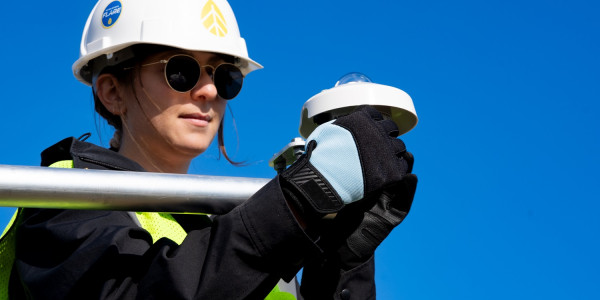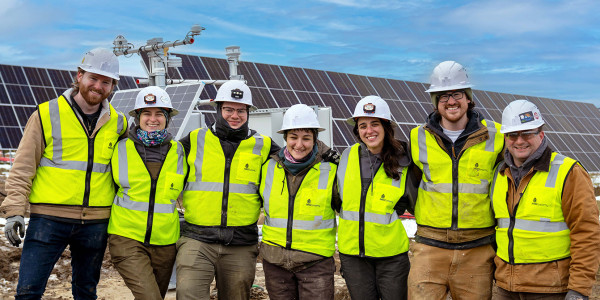April 29, 2011 | Energy Policy, Sustainability + Energy,
A few months ago, I began drafting a blog post on a Clean Energy Standard and what I believed would be a slippery slope of compromise for the renewable energy industry. I felt and still believe that moving from a Renewable Energy Standard to a Clean Energy Standard (CES) would undermine the potential of renewable energy and result in a “sell out” of its values if you will.
First Draft, Revisited
My earlier draft touched on what I see as the great promise of wind energy: that it (and other renewable energy sources) can make the world a better, safer place for future generations. Our values as a company and my own personal values are deeply entrenched in environmental protection.
Yet for as long as I can remember, our industry has been fighting to have the true value of wind and other renewable energy sources recognized. We’ve been fighting to garner the political and financial support that the rest of the energy industry has enjoyed since their inception. Renewable energy sources are safe, clean, endless and don’t come with the incredible price tag that fossil fuels do.
This price tag, or externalities, as they are called in the energy industry are not reflected in the cost we pay for our power. How will we ever recognize the real value that renewable energy offers, if we, as a society, never pay the true costs (in terms of the environmental, health and safety impacts) associated with the other energy sources (clean coal, nuclear, natural gas) that we are considering to be part of a CES?
That was how this post started a few months ago…
Will tragedy rekindle interest in renewable energy?
Fast forward to March 11 and Japan’s heart-wrenching tragedy: the 9.0 earthquake followed by a tsunami. The loss of lives and devastation are unimaginable. And if this natural disaster weren’t enough, the world is now dealing with a nuclear disaster that continues to unfold—the effects from which cannot yet be known but will undoubtedly affect us all and last for generations.
We can say that these were extremely unlikely circumstances. That such a disaster could never happen again. But the list of nuclear power plants crippled by “extremely unlikely circumstances” is growing. We can include Three Mile Island, Chernobyl and now Japan’s Fukushima nuclear power plant. In my mind, that is three too many.
Will this disaster be a wake up call for us and our policymakers—just like the Massey coal mining disaster and the BP oil spill should have been?
Some of the energy analysts and recent headlines have suggested it may be. But I’m not convinced. At the same time I see headlines touting the end of nuclear power and a potential comeback of renewables because of this disaster, I’m also hearing mentions that concerns about radiation are overblown, that we’ll learn from this and do it differently, that nuclear power continues to be a safe choice. I’m continuing to see proposals that call for more domestic oil drilling.
The pros and cons of energy sources remain unchanged
Nothing about nuclear energy has changed because of this disaster. The pros and cons remain the same. Nuclear may have fewer air emissions than coal or natural gas, but we will always have a waste disposal issue and the threat to human health, safety and security. With coal we have seen the devastation of our mountaintops and must deal with the health and safety issues that accompany mining and its air emissions. And with natural gas and fracturing we have emissions (though perhaps less than coal), price volatility and are now only beginning to see the effects on our drinking water. Yet natural gas continues to drive our energy policy and our energy costs.
Here in the United States we say we’ve planned for earthquakes and our nuclear power plants are too far inland to be reached by any tsunami. The fact remains that we can never adequately prepare for the worst case scenario because we simply don’t know what “worst case” could be…until, of course, it happens. Certainly Japan did not anticipate the largest earthquake to date, followed by a tsunami, followed by a power outage that would cripple the generators that provide cooling water for the fuel rods and the reactor core.
But we come back to the crux of the problem: that these costs—the externalities—are not accounted for when we turn on our lights each day. We don’t pay these costs…until there is a tragedy. And then we pay dearly.
Wind energy and renewables stand ready and waiting
Will this tragedy be a wake-up call? If not, what will it take for our nation to see the great promise that renewable energy has to offer?
It seems that our policymakers have been doing everything possible to hold wind energy in its infancy and not give it a chance to stand. While public opinion polls show strong support for renewables, there is a major disconnect between these polls and our own Federal policies.
Why not embrace wind energy and give it the policy and financial supports that the nuclear, oil, natural gas and coal industries have had for so many years (and continue to have)? Are we afraid that it might succeed?
Here is an energy resource that is clean, plentiful and free. Wind provides diversity to our power supply, price stability and can help stimulate our economy with the development of quality jobs and a rebuilding of our wind manufacturing base. We don’t need to practice evacuation drills on a wind farm. We don’t have disposal or waste storage issues. We don’t have air emissions. A terrorist attack, an earthquake, a hurricane, the unimaginable won’t cause devastation that will last a lifetime.
Time may lessen the impact of this most recent tragedy for some. But time will never change what has happened. And wind energy will still be here for us…proven technology, ready, available and waiting.
Additional Reading
WorldWatch Institute: Nuclear Power after Fukushima





